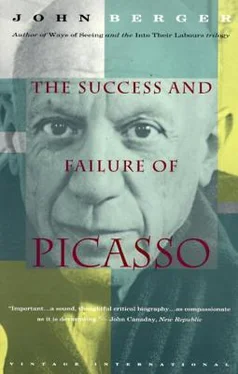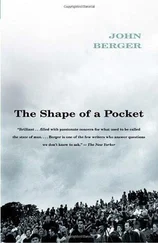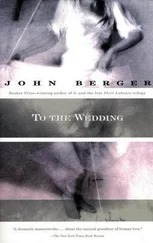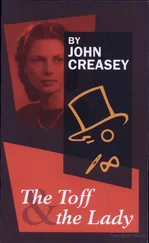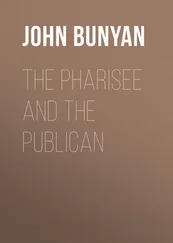The last paintings of Rembrandt — particularly the self-portraits — are proverbial for their questioning of everything the artist had done or painted before. Everything is seen in another light. Titian, who lived to be almost as old as Picasso, painted towards the end of his life the Flaying of Marsyas and the Pietà in Venice: two extraordinary last paintings in which the paint as flesh turns cold. For both Rembrandt and Titian the contrast between late and earlier works is very marked. Yet there also is a continuity, the basis of which is difficult to define briefly. A continuity of pictorial language, of cultural reference, of religion, and of the role of art in social life. This continuity qualified and reconciled — to some degree — the despair of the old painters; the desolation they felt became a sad wisdom or an entreaty.
With Picasso this did not happen, perhaps because, for many reasons, there was no such continuity. In art, he himself had done much to destroy it. Not because he was an iconoclast, nor because he was impatient with the past, but because he hated the inherited half-truths of the cultured classes. He broke in the name of truth. But what he broke did not have the time before his death to be reintegrated into tradition. His copying, during the last period, of old masters like Velázquez, Poussin, or Delacroix was an attempt to find company, to re-establish a broken continuity. And they allowed him to join them. But they could not join him.
And so, he was alone — like the old always are. But he was unmitigatedly alone because he was cut off from the contemporary world as a historical person, and from a continuing pictorial tradition as a painter. Nothing spoke back to him, nothing constrained him, and so his obsession became a frenzy: the opposite of wisdom.
An old man’s frenzy about the beauty of what he can no longer do. A farce. A fury. And how does the frenzy express itself? (If he had not been able to draw or paint every day he would have gone mad or died — he needed the painter’s gesture to prove to himself he was still a living man.) The frenzy expresses itself by going directly back to the mysterious link between pigment and flesh and the signs they share.
It is the frenzy of paint as a boundless erogenous zone. Yet the shared signs, instead of indicating mutual desire, now display the sexual mechanism. Crudely. With anger. With blasphemy. This is painting swearing at its own power and at its own mother. Painting insulting what it had once celebrated as sacred. Nobody before imagined how painting could be obscene about its own origin, as distinct from illustrating obscenities. Picasso discovered how it could be.
How to judge these late works? It is too soon. Those who pretend that they are the summit of Picasso’s art are as absurd as the hagiographers around him have always been. Those who dismiss them as the repetitive rantings of an old man understand little about either love or the human plight.
Spaniards are proverbially proud of the way they can swear. They admire the ingenuity of their oaths, and they know that swearing can be an attribute, even a proof, of dignity.
Nobody ever swore in paint before.
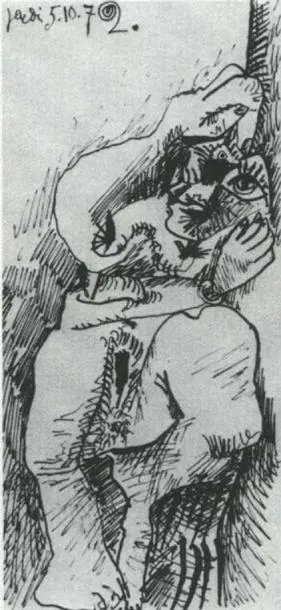
124 Picasso. Nu couché. 1972
Abstract art, freedom and
Apollinaire, Guillaume:
and Cubism, 1.1, 1.2
death of, 1.1, 1.2
and electricity
and the new poetry, 1.1, 1.2
and Parade , 1.1, 1.2
and Picasso’s genius
Aragon, Louis
Arcadia:
Bellini’s
Léger’s
Picasso’s
Titian’s
Art:
boom in
intrusion of politics in
as an oracle
Bakunin, Mikhail
Barcelona, 1.1, 1.2, 1.3
Bellini, Giovanni
Besson, Georges, 1.1, 1.2
Bohr, Niels
Bourgeoisie:
attitude of to art, 1.1, 1.2
attitude of to poverty
and the modern artist, 1.1, 2.1
success, in eyes of
unreality of
utilitarianism of
worthlessness of honours offered by
Brancusi, Constantin
Braque, Georges, 1.1, 1.2, 1.3, 1.4
Brenan, Gerald
Césaire, Aimé, 2.1, 2.2
Cézanne, Paul, 1.1, 1.2
Chaplin, Charles
Clouzot, Henri-Georges, his film on Picasso
Cocteau, Jean, 1.1, 1.2, 1.3
Communism, 1.1, 2.1
Communist Party of France, 2.1, 2.2
Courbet, Gustave
Cubism:
as art of interaction
and film
importance of
materials used
and modern physics
and monopoly capitalism
preparations for
revolutionary nature of, 1.1, 1.2, 1.3
sexuality of
simultaneity of viewpoints
starting-point of
subject-matter
Darwin, Charles
Delacroix, Eugéne
de la Serna, Ramon Gomez
Demoiselles d’Avignon, Les
di Cosimo, Piero
Duende, see Spain
Europe, modern:
outcasts from
Picasso’s attitude to, 1.1, 1.2, 1.3, 1.4, 2.1
poverty of
unreality of, 2.1, 2.2
Expressionism
Fascism
Fra Angelico
France:
attitude to art
German occupation of, and
Nude with a Musician , 2.1, 2.2
Frazer, Sir James
Futurists
Gauguin, Paul
Giorgione
Gris, Juan, 1.1, 1.2
Guernica , 1.1, 1.2, 2.1, 2.2
Heisenberg, Werner
History, effects of on character
Impressionism, 1.1, 1.2
Ingres, Jean Auguste Dominique, 1.1, 2.1
Jacob, Max, 1.1, 1.2
Jahn, Janheinz
Kafka, Franz, 1.1, 1.2
Keats, John
Léger, Fernand
Lenin, Vladimir Ilyich, 1.1, 1.2
Lerroux, Alezandro, 1.1, 1.2
Lorca, Federico García
Magic:
illusions of
and the Spanish duende
Malaga, 1.1, 1.2, 1.3
Manet, Edouard
Manolo
Marx, Karl, 1.1, 1.2, 1.3
Millais, Sir John
Millet, Jean François
Monopoly capitalism, 1.1, 1.2, 2.1
Olivier, Fernande
Ortega y Gasset, José
Parade
Paris, 1.1, 1.2
Parmelin, Hélène
Pastiche
Penrose, Roland, 1.1, 2.1
Picasso, Pablo:
and anarchism, 1.1, 1.2, 1.3
attitude to own genius, 1.1, 1.2, 1.3
birth of
as a bourgeois revolutionary
a child prodigy, 1.1, 1.2
becomes a communist
confessions of, in autobiographical drawings
conflict with father, 1.1, 2.1
crisis of his subject-matter, 2.1, 2.2
devotion to his own creativity, 1.1, 1.2
discontinuity of his work
end of his isolation
example of
his exile, 1.1, 1.2, 2.1, 2.2, 2.3, 2.4
fear of blindness, 1.1, 1.2
historical ambiguity of
humanism of
as an impersonator
influence of African masks on
influence of archaic Spanish sculpture on
intensity of his art, 1.1, 1.2, 2.1
his irrationalism, 1.1, 1.2
the legend
loneliness of, 1.1, 1.2, 1.3, 2.1
as a magician, 1.1, 1.2
market prices
as the Minotaur
as a national monument
nature of his genius, 1.1, 1.2, 1.3, 1.4, 1.5, 2.1, 2.2
as Pan
and the portrayal of pain, 2.1, 2.2
on research in painting
and sensation in art
sexuality of his art
unchanged vision of
work since 1945
and world communist movement
Pottery
Poussin, Nicholas:
Triumph of Pan
Prodigies in art
Quantum mechanics
Raynal, Maurice
Rembrandt, 2.1, 3.1
Revolutionary thought:
bourgeois, 1.1, 2.1
proletarian, 1.1, 2.1
Richardson, John
Romanticism:
attitude of to work
Rousseau, father of
vision of the future
Читать дальше
